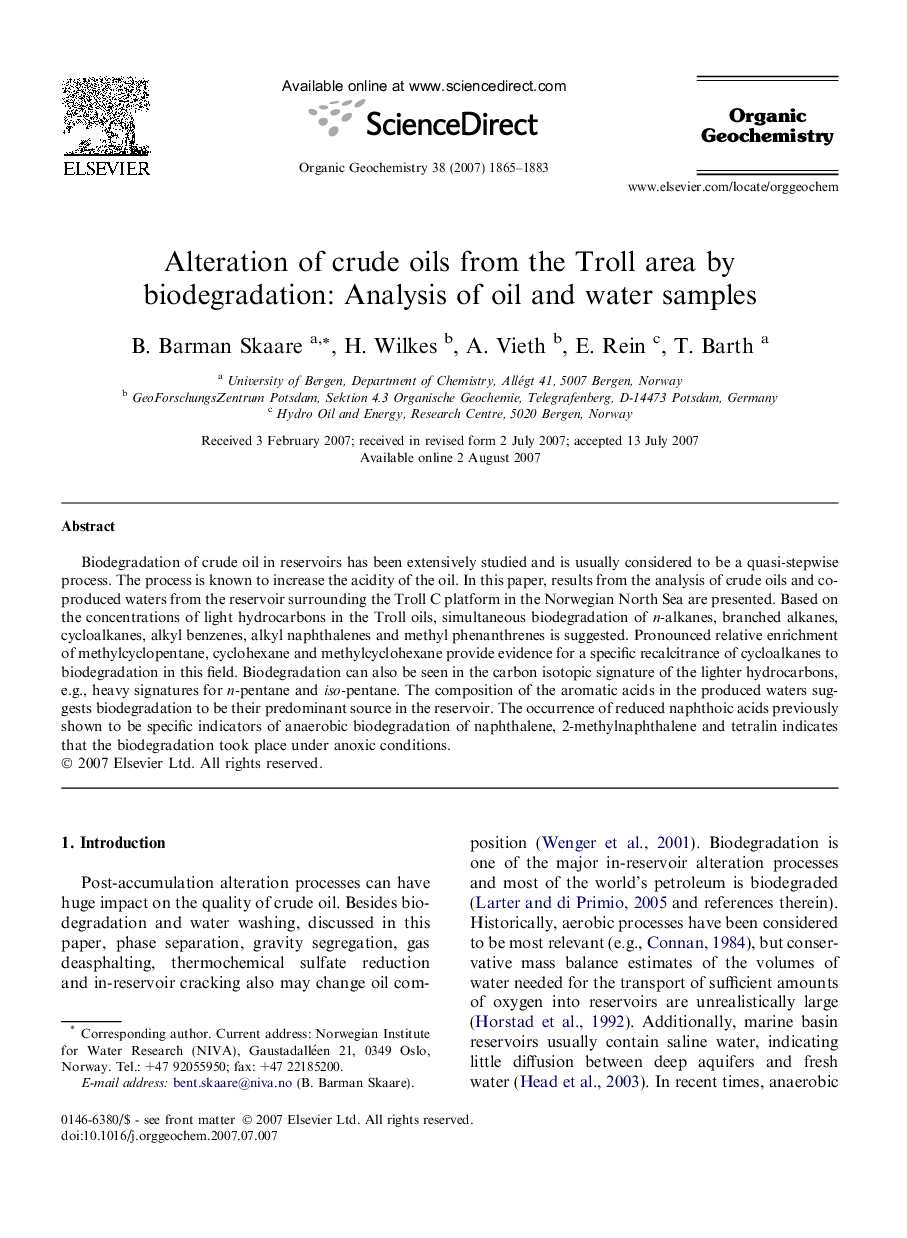| Article ID | Journal | Published Year | Pages | File Type |
|---|---|---|---|---|
| 5163333 | Organic Geochemistry | 2007 | 19 Pages |
Abstract
Biodegradation of crude oil in reservoirs has been extensively studied and is usually considered to be a quasi-stepwise process. The process is known to increase the acidity of the oil. In this paper, results from the analysis of crude oils and co-produced waters from the reservoir surrounding the Troll C platform in the Norwegian North Sea are presented. Based on the concentrations of light hydrocarbons in the Troll oils, simultaneous biodegradation of n-alkanes, branched alkanes, cycloalkanes, alkyl benzenes, alkyl naphthalenes and methyl phenanthrenes is suggested. Pronounced relative enrichment of methylcyclopentane, cyclohexane and methylcyclohexane provide evidence for a specific recalcitrance of cycloalkanes to biodegradation in this field. Biodegradation can also be seen in the carbon isotopic signature of the lighter hydrocarbons, e.g., heavy signatures for n-pentane and iso-pentane. The composition of the aromatic acids in the produced waters suggests biodegradation to be their predominant source in the reservoir. The occurrence of reduced naphthoic acids previously shown to be specific indicators of anaerobic biodegradation of naphthalene, 2-methylnaphthalene and tetralin indicates that the biodegradation took place under anoxic conditions.
Related Topics
Physical Sciences and Engineering
Chemistry
Organic Chemistry
Authors
B. Barman Skaare, H. Wilkes, A. Vieth, E. Rein, T. Barth,
